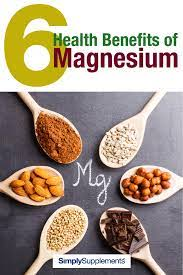
- Cardiovascular disease deaths involving substance use increased from 1999 to 2019, even as overall cardiovascular disease deaths fell during that time.
- Alcohol was involved in 65% of cardiovascular disease deaths related to substance use, but death rates for cannabis and psychostimulants increased more sharply.
- Women, American Indian and Alaskan adults, younger adults, and rural residents also saw larger increases in cardiovascular disease deaths related to substance use.
Deaths due to cardiovascular disease that involved substance use increased an average of 4% per year from 1999 to 2019, even as overall cardiovascular disease deaths decreased during that time, a new study shows.
“The results are concerning, as they mark a significant upward trend in cardiovascular deaths where substance abuse was noted,” said Dr. Sameer Amin, cardiologist and chief medical officer at L.A. Care Health Plan, who was not involved with the new research.
“Considering this is in the midst of an overall decrease in cardiovascular death during that time period, this appears to be an exception to our progress in treating cardiac disease,” he told Healthline.
Dr. Cheng-Han Chen, interventional cardiologist and medical director of the Structural Heart Program at MemorialCare Saddleback Medical Center in Laguna Hills, Calif., pointed out that the data in the study only goes through 2019, just before the start of the COVID-19 pandemic.
“There have been data pointing out that substance use and abuse have worsened starting in 2020 with the pandemic,” said Chen, who was not involved in the new study. So “it’s concerning to think that this trend may be getting worse in more recent years.”
The study was published Jan. 10 in the Journal of the American Heart Association.
Many substances linked to cardiovascular disease
In the study, researchers used publicly available data from the Centers for Disease Control and Prevention’s Wide-Ranging Online Data for Epidemiologic Research (WONDER) database to examine cardiovascular disease death trends from 1999 to 2019.
The rate of cardiovascular deaths related to substance use increased from 9.9 per 100,000 population in 1999 to 21.4 per 100,000 population in 2019, researchers found — an average increase of 4% per year. From 2012 to 2019, the death rate increased even more rapidly: 6.2%.
In comparison, the overall rate of cardiovascular disease deaths decreased an average of 1.5% per year, researchers found.
Several substances, such as alcohol, opioids, stimulants, sedatives and cannabis increase the risk of cardiovascular disease, including coronary heart disease, heart failure and irregular heart rhythms, the researchers point out.
Overall, 65% of the cardiovascular disease deaths related to substance use were linked to alcohol, followed by opioids (13.7%), cocaine (9.8%), stimulants (6.5%), sedatives (4.1%) and cannabis (0.5%).
However, people who used cannabis (12.7%) and psychostimulants such as amphetamines (16.8%) had higher increases in the average annual percent change in cardiovascular disease deaths related to substance use.
“It’s troubling to see that there have been increases in cardiovascular disease mortality with all different types of substances, not only the most commonly used substance, alcohol,” Chen told Healthline.
The study did not include smoking/tobacco use as a form of substance use. Smoking is linked to heart disease, stroke and other chronic diseases, as well as lung and other cancers.
While the findings highlight long-term trends in cardiovascular disease deaths related to substance use, researchers did not have information about other risk factors for cardiovascular disease, such as a condition such as type 2 diabetes or high blood pressure or whether people had a family history of cardiovascular disease.
Who is most impacted by cardiac deaths
The new study’s findings show that certain groups were impacted more by cardiovascular disease deaths related to substance use.
For example, increases in the average annual percent change for death rates were higher for American Indian or Alaskan individuals (5.4%); people ages 25 to 59 years (5.3%); people living in rural areas (5.0%); adults ages 55 to 69 years (4.9%); and women (4.8%).
“I am particularly concerned at the disparities in outcomes for women, American Indian/Alaskan individuals and rural area residents,” said Amin. This “could represent healthcare inequities in our system.”
The death rate was higher for people living in rural areas (15.2 per 100,000) than urban areas (14.1 per 100,000). It was also higher for men (22.5 per 100,000) than women (6.8 per 100,000).
Although death rates were higher in men than in women, women saw larger increases during the study period, researchers found.
“Data from prior studies have found notable increases in substance use among women over the last 20 years, and women may face unique societal risks that may contribute to the increases noted in our study,” study author Dr. Dmitry Abramov, cardiologist and associate professor of medicine at Loma Linda University Health in Loma Linda, Calif., said in a news release.
In addition, there were differences in rates among racial and ethnic groups.
The highest death rate was among American Indian or Alaska Native adults (37.7 per 100,000), in comparison to Black adults (20.3 per 100,000), white adults (14.1 per 100,000), Hispanic adults (13.0 per 100,000) and Asian adults or Pacific Islanders (3.6 per 100,000).
Chen said understanding which groups are most affected by cardiovascular disease deaths related to substance use could help target public health efforts aimed at reducing substance use, and related health outcomes, among these groups.
In addition to trends through 2019, Amin is concerned about what has happened since then. In particular, he highlighted that there appears to be an upward trend for some groups starting around the time of the 2007-2008 financial crisis.
“If this is associated with an increase in socioeconomic inequality and a widening gap in economic disparity [between certain groups] during that time, we have to be particularly vigilant post-COVID pandemic,” he said. “The effects of the post-COVID economic environment could potentially exacerbate the gap.”
Takeaway
Researchers used data from the CDC to examine cardiovascular disease death trends from 1999 to 2019. In particular, they focused on deaths that involve substance use.
During that time, cardiovascular disease deaths involving substance use increased by an average of 4% per year — with a faster increase from 2012 to 2019 — even as overall cardiovascular disease deaths fell.
Rates of cardiovascular disease deaths involving substance use increased faster for women, American Indian and Alaskan adults, younger adults, and rural residents, as well as for those who used cannabis or psychostimulants.

